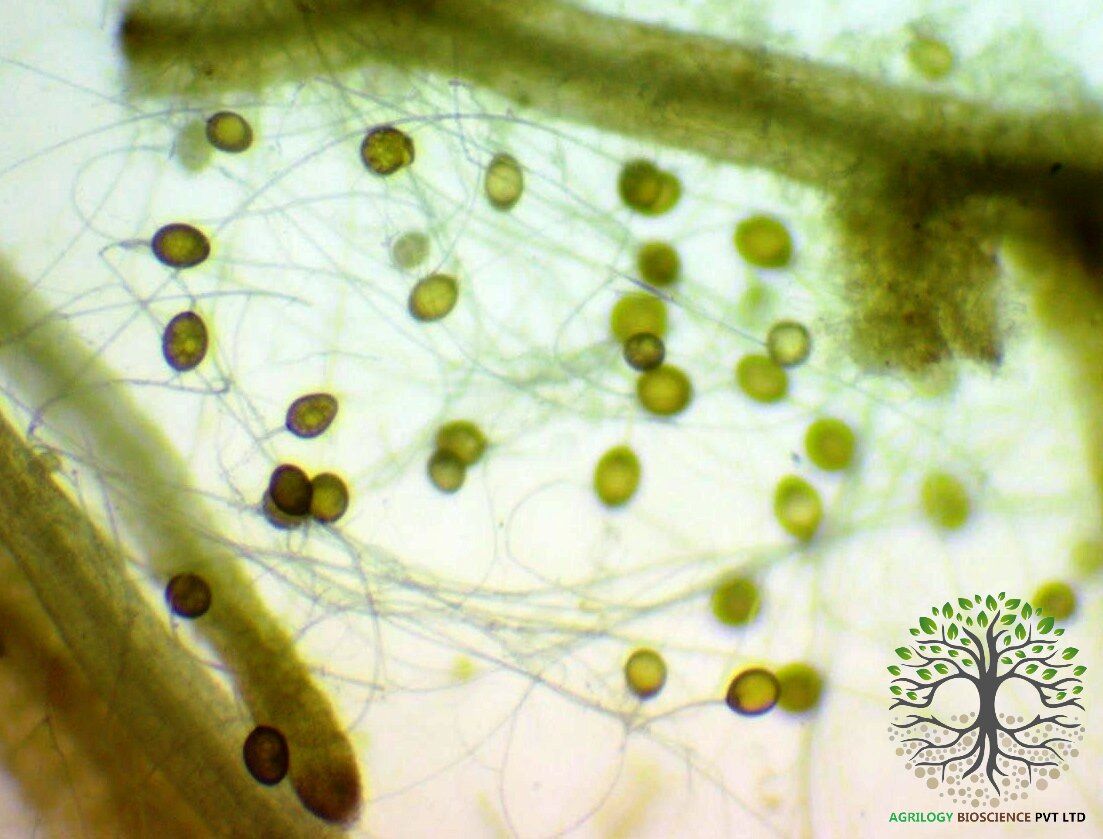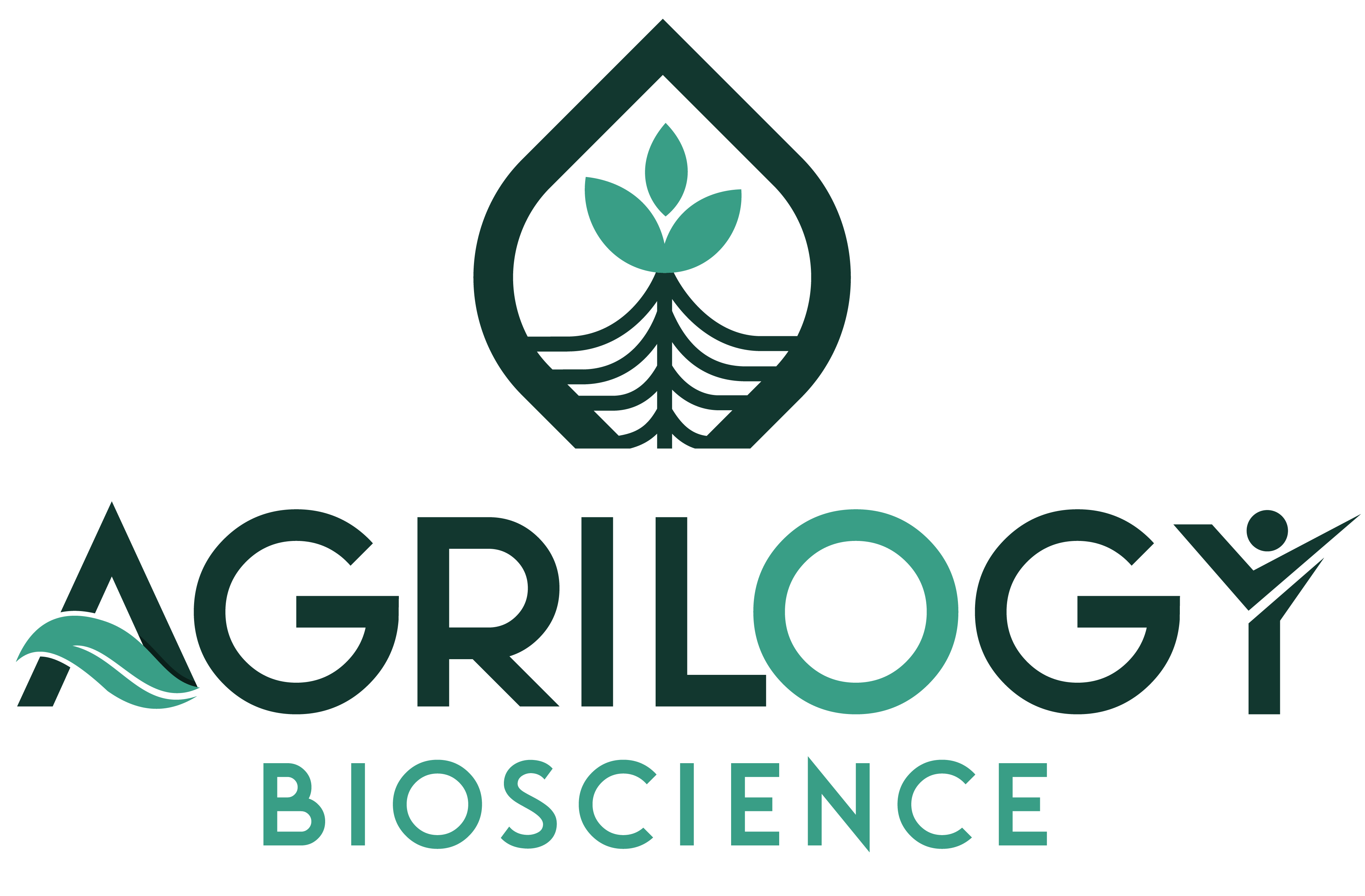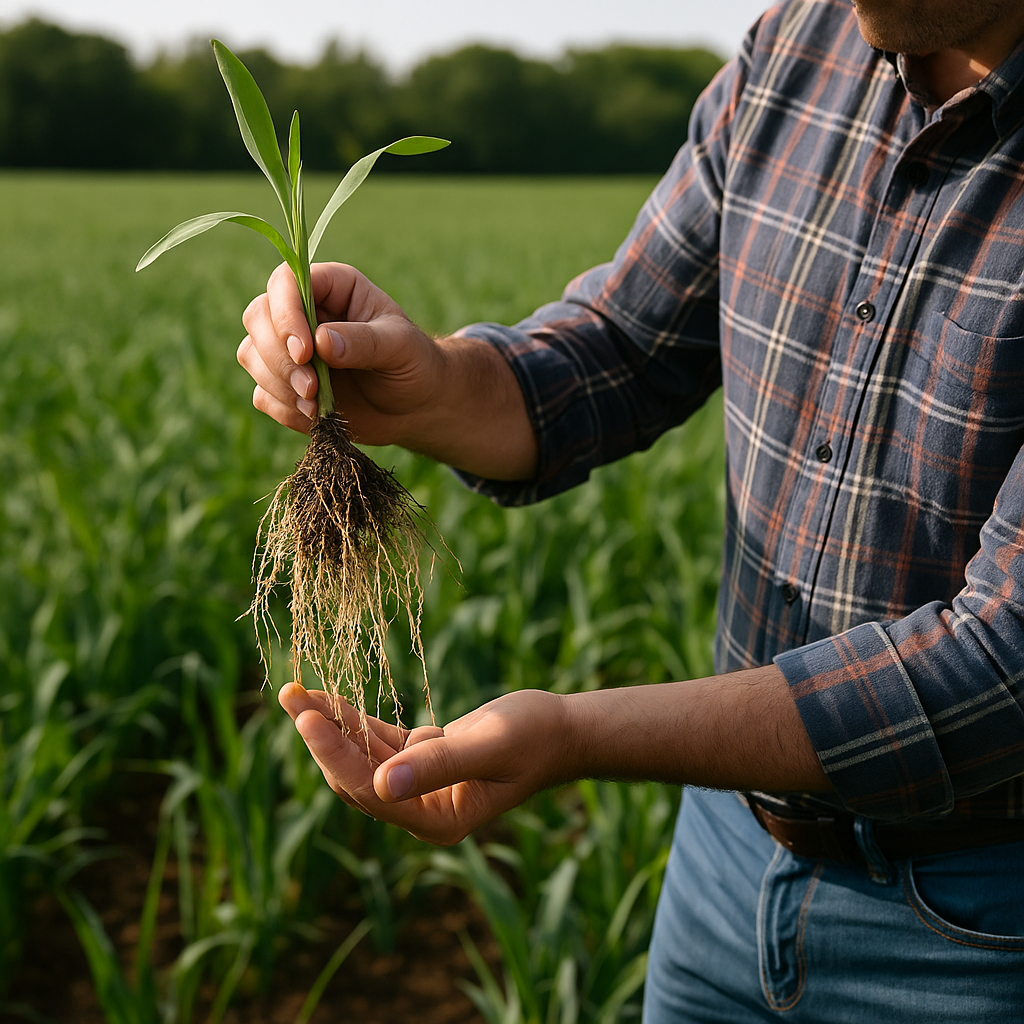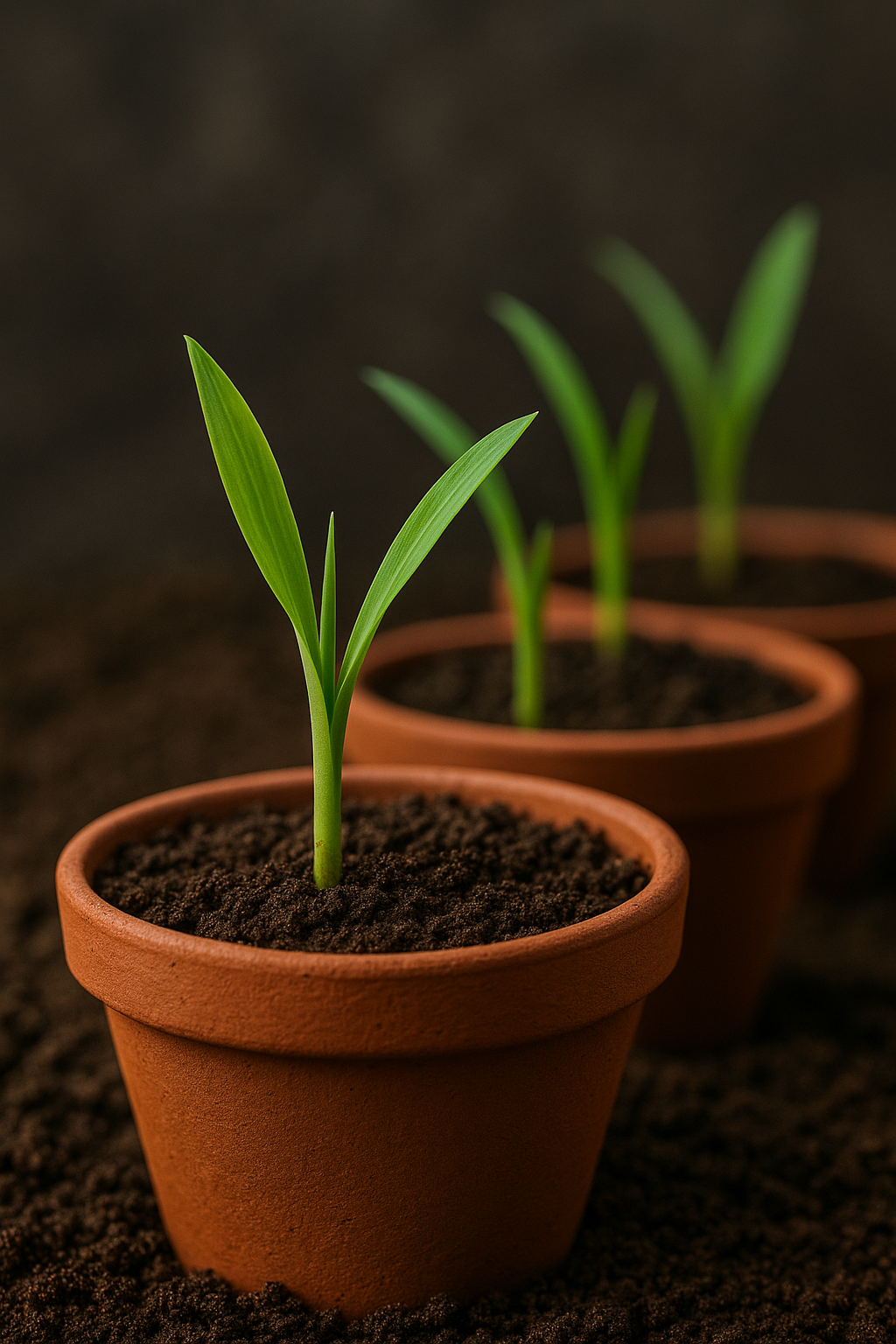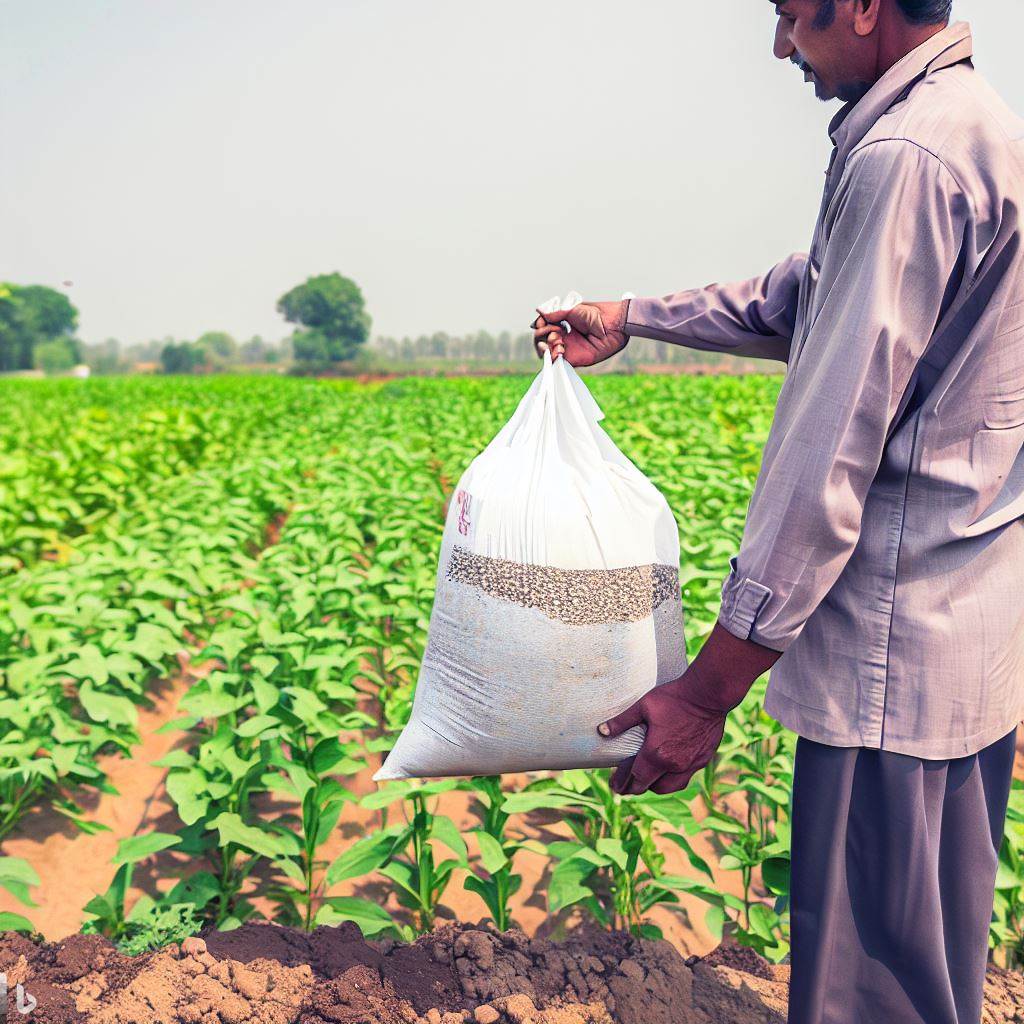
Nature’s Design for Growth: Diverse Roots, Resilient Plants
Nature’s Original Strategy: Why Plants Never Grow Alone?
Walk through any forest, grassland, or uncultivated patch of earth, and you’ll witness a marvel of natural engineering—not above the ground, but beneath it.
In natural ecosystems, plants never form relationships with just one species of mycorrhizal fungi. Instead, they depend on a rich, diverse community of fungal allies living in the rhizosphere (the zone of soil surrounding their roots). This isn’t just biological event —it’s an evolved survival strategy over fine-tuned hundreds of millions of years.
This underground symbiotic network, called a mycorrhizal consortium, allows plants to access nutrients, moisture, and microbial defense mechanisms far beyond their reach alone. Each fungal species contributes its own strengths, allowing plants to adapt to changing conditions, combat stressors, and thrive in unpredictable environments.
So if nature—untamed and unmodified—thrives on microbial diversity, why should modern agriculture rely on just one species of mycorrhiza in its inoculants?
At Agrilogy Bioscience, we believe the best agricultural innovations come from studying and replicating nature's own solutions. That’s why our Agright™ VAM product is designed as a multi-species consortium, echoing the very strategy nature uses to empower plant life.
Let’s explore why this natural model of diversity is not only more effective—but essential for resilient, sustainable farming.
Where the Single-Species Model Fails?
Commercial inoculants often rely on just one fungal species—usually Glomus intraradices (Rhizophagus irregularis)—known for its capacity to improve phosphorus uptake. However, this monoculture approach suffers from serious limitations:
- Narrow Functional Scope:
A single fungal species can only contribute one set of benefits—often limited to one nutrient or function. This oversimplifies the plant’s needs and risks leaving it unsupported in times of stress or transition.
- Soil Sensitivity
In high-phosphorus soils (common in agriculture), G. intraradices often goes dormant. That means no support to the plant—no matter what the label promises.
- Uniform Colonization
Root systems and their development vary dramatically over time. A single mycorrhizal species can’t effectively colonize all parts of the root or adjust to different plant growth stages.
Mycorrhizal Consortia: Nature’s Blueprint for Resilience
In natural settings, plant roots are colonized by multiple mycorrhizal species simultaneously. This strategy provides:
- Biological redundancy: If one species falter, others compensate.
- Functional diversity: Different fungi help with different nutrients, resist different pathogens, and handle different stressors.
- Lifecycle flexibility: Some fungi activate early in plant development; others offer long-term benefits.
Inspired by this model, our Agright™ VAM features a carefully selected four-species blend, each with a unique role to play. Together, they create a resilient symbiotic network, tailored to real-world conditions and diverse crop needs.
The Power of the Agright™ VAM Consortium—Expanded Benefits
- Functional Redundancy & Synergy
Each fungal species brings distinct capabilities. Whether it’s phosphorus solubilization, nitrogen uptake, drought mitigation, or pathogen suppression, consortia provide a full spectrum of support—allowing plants to "choose" the partner they need, when they need it.
- Resilience Under Stress
Environmental fluctuations are inevitable. Some fungi in the consortium may become dormant under specific conditions (like high phosphorus), but others remain active—ensuring your crop is never without microbial allies.
- Accelerated and Diversified Colonization
The speed and pattern of root colonization differ among fungi. Early colonizers initiate quick support during germination or transplant shock, while others form deep, stable relationships that enhance long-term performance.
- Full Lifecycle Coverage
From seedling to flowering and harvest, a plant's needs evolve. With a diverse fungal network in place, your crop receives tailored support through every stage of its growth.
Nature Doesn’t Do Monoculture—Why Should You?
Every inch of living soil in the wild is flourishing with fungal diversity. Nature understands that no single organism can do it all. This complex underground system ensures plant survival, adaptability, and productivity.
By emulating this model through multi-species mycorrhizal consortia, we not only improve plant performance but also regenerate soil health, reduce dependence on chemical inputs, and move toward true agricultural sustainability.
A Smart Investment for Future-Ready Farming
Choosing the right inoculant isn’t just a technical matter—it’s a strategic decision. Single-species products may offer narrow, short-term benefits, but they fall short in the dynamic and often stressful environments modern growers face.
By investing in a mycorrhizal consortium like Agright™ VAM, you provide your crops with:
- Adaptive microbial support
- Broader nutrient access
- Greater resistance to environmental stress
- Faster establishment and long-term vitality
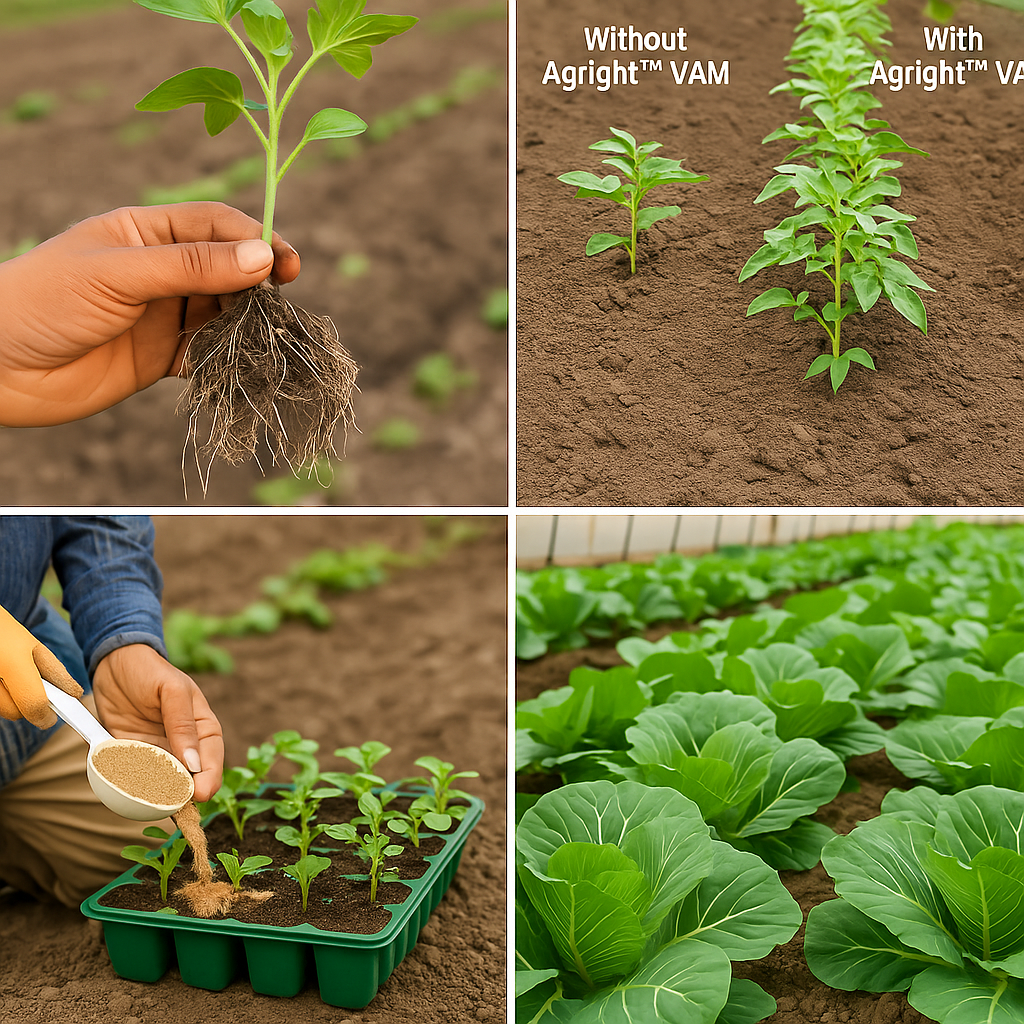
Nature Knows Best: Trust the Underground Network
Nature has already done the research. It chose diversity. It chose collaboration. It chose resilience through complexity.
At Agrilogy Bioscience, we bring these natural principles into your fields—helping you grow smarter, stronger, and more sustainably.
ASSESSMENT OF EFFECTIVENESS OF MYCORRHIZAL INOCULANT IN SORGHUM BY IN VIVO POT CULTURE METHOD
Sorghum is a climate resilient crop known for its drought tolerance and nutritional benefits in arid regions, but even the challenges of plants can be benefitted from a little help. Enter Vesicular Arbuscular Mycorrhiza (VAM), a beneficial fungus that plays a critical role in improving plant health, especially under challenging growing conditions (biotic and abiotic stresses). VAM serves number of benefits to the plant health but how do we know if our VAM inoculum is truly effective?
In this blog, we’ll dive into how VAM inoculation can boost sorghum growth and how researchers are assessing the effectiveness of these fungal partnerships through a traditional in vivo pot culture method.
The Symbiosis of VAM: How Fungi and Plants Thrive Together
Plants and fungi have formed a unique partnership over millions of years. VAM fungi penetrate cortical region of the plant roots, creating a vast network of fungal mycelia (intraradical hyphae) that increases the plant's extent to nutrient availability zone through increase in surface area of mycelia. This relationship allows the plant to access nutrients like phosphorus, nitrogen, zinc etc. which are often unavailable in the plant`s reach zone in the rhizosphere, while the plant provides the fungi with essential sugars and lipids.
For crops like sorghum, this partnership can significantly improve plant growth, especially in nutrient-deficient or water and heat stressed environments.
Assessing the Inoculum Potential: The In Vivo Pot Culture Method
To evaluate the effectiveness of mycorrhizal inoculum, researchers employ an in vivo substrate based pot culture method. This technique involves growing plants in suitable substrate where the inoculated fungi can be monitored for root colonization and overall plant growth for 45-60 days.
Here’s a quick look at how it works:
- Preparation of the Inoculum: Mix the VAM spores with a sterilized substrate (sand, soil, and cocopeat). Serial dilutions (10-1 to 10-4) of the inoculum are created to test the effect of different concentrations of VAM on plant growth.
- Planting Sorghum Seeds: After preparing the inoculum, sorghum seeds are sown into containers filled with the substrate mixture. Each container represents a different dilution, allowing us to test the effectiveness of various inoculum concentrations.
- Observing Growth and Root Colonization: After germination, only one plant per container is maintained, and the plant grows for 45 days. Researchers then examine the roots for signs of mycorrhizal colonization using a microscope. The presence or absence of mycorrhizae is noted, and the data is used to calculate the inoculum potential (IP) of the fungal sample.
- Calculating Inoculum Potential (IP): Using the Most Probable Number (MPN) method, researchers can estimate the inoculum potential—a measure of how many viable fungal propagules (spores) are present per gram of substrate. This helps determine the optimal level of inoculum for maximum plant growth.
The Benefits of VAM Inoculation for Sorghum
The results of these experiments often reveal significant benefits for sorghum growth, especially in challenging environments. Here’s why inoculating with VAM fungi can be a game-changer for sorghum farmers:
- Stronger Root Systems: VAM inoculation results in more extensive root networks, allowing plants to absorb nutrients more efficiently, especially phosphorus.
- Better Growth and Yield: VAM-treated plants typically exhibit increased height, weight, and biomass. In some studies, the inoculation has also led to higher yields of grain.
- Improved Stress Resistance: With increasing global challenges like climate change and soil degradation, VAM’s role in enhancing drought and salinity tolerance is critical. Sorghum plants inoculated with VAM show better survival rates and more robust growth under such stress conditions.
Challenges and Future Directions
While VAM inoculation in in vivo technology offers many advantages, the process isn’t without challenges. Standardizing spore quality, preventing contamination, and ensuring uniformity in the fungal inoculum can be difficult. However, these obstacles are not insurmountable. Ongoing research is focused on refining inoculum production methods and developing more efficient ways to apply VAM fungi in field settings.
Conclusion: A Symbiotic Solution for the Future of Sorghum Farming
Inoculating sorghum seeds with Vesicular Arbuscular Mycorrhiza (VAM) is proving to be a powerful tool for improving plant growth, resilience, and overall crop yield. By using techniques like in vivo pot culture, growers are better able to assess the effectiveness of VAM inoculum and refine these methods for large-scale farming.
Whether you're a researcher, farmer, or simply a plant enthusiast, understanding the power of beneficial fungi like VAM can help us develop more sustainable and productive agricultural practices. As we continue to explore the full potential of these mycorrhizal partnerships, the future of crops like sorghum looks brighter than ever.
We will learn about MPN estimation for IP analysis in our next blog. Stay connected!
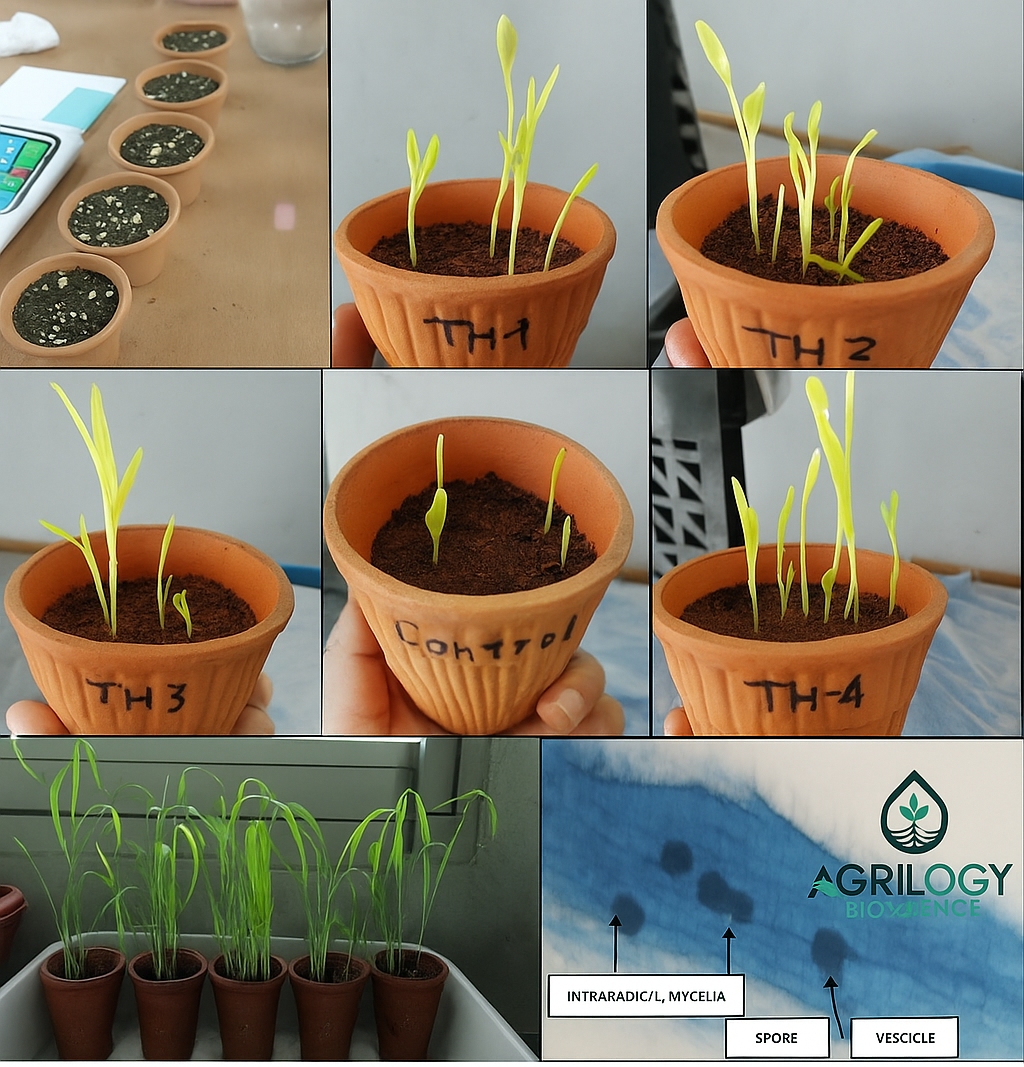
Rooted in Resilience: The Power of Mycorrhizal Technology
Farming on the Edge: Soil Degradation, Climate Stress, and What Comes Next?
Did you know that over 16% of India’s land is classified as barren?
According to a 2023 survey by the Department of Agriculture & Farmers Welfare, these lands—spanning deserts, degraded mountains, and drought-prone zones—are no longer suitable for cultivation. And the reason is range of stressors, both biotic and abiotic which include water scarcity, overuse of chemical fertilizers, poor agricultural practices such as excessive tillage, and soil contamination by heavy metals. Together, they lead to a decline in essential soil nutrients, loss of microbial biodiversity, increased soil erosion, and reduced agricultural productivity.
But what if we told you that a microscopically, hidden beneath our feet, holds the power to restore this land and reshape the future of farming? Welcome to the fascinating world of rootrrhiza—nature’s underground network that’s transforming how we grow food.
Understanding Mycorrhiza: Nature’s Underground Network
Mycorrhiza refers to a symbiotic association between plant roots and certain beneficial fungi. Derived from the Greek words for "fungus" and "root," mycorrhiza represents one of nature’s oldest and most efficient mutualisms. In this partnership, the fungus penetrates the plant's root system and extends into the surrounding soil through fine thread-like structures called hyphae. These hyphae increase the plant's access to water and nutrients, especially phosphorus, which are otherwise difficult to absorb. In exchange, the plant provides the fungus with sugars and lipids produced through photosynthesis. This mutually beneficial exchange not only enhances plant health but also promotes long-term soil sustainability.
Two Paths to Partnership: Endomycorrhizae vs. Ectomycorrhizae
There are two major categories of mycorrhizal fungi: endomycorrhizae (also known as arbuscular mycorrhizal fungi or AMF) and ectomycorrhizae.
Endomycorrhizae form internal associations with plant root cells and are known to colonize around 85% of terrestrial plant species, including most food crops. These fungi form specialized structures such as arbuscules (for nutrient exchange) and vesicles (for storage and reproduction).
Ectomycorrhizae, on the other hand, form external networks around root surfaces and are more commonly associated with woody plants and trees, including conifers and hardwoods. While most plants benefit from these associations, members of the Brassica family (such as cabbage, cauliflower, and mustard) are typically non-mycorrhizal.
Why AMF Matter: 7 Powerful Benefits for Modern Agriculture
Arbuscular mycorrhizal fungi (AMF) are not just biological allies—they are integral to enhancing crop resilience, soil health, and long-term agricultural productivity. The symbiosis between AMF and plant roots triggers a cascade of beneficial physiological and ecological responses that address both nutrient dynamics and environmental stresses. Below are the key agronomic advantages of incorporating AMF into modern farming systems:
- Enhanced Nutrient Absorption and Assimilation: AMF significantly increase a plant’s ability to absorb essential macro- and micronutrients, particularly phosphorus, from the soil. Their extensive hyphal networks function as an extension of the root system, accessing nutrients from soil pores that roots alone cannot reach. This leads to improved nutrient uptake efficiency and better assimilation of minerals, directly supporting plant growth and development.
- Resistance to Drought and Salinity Stress: Through improved water absorption and efficient resource allocation, AMF-inoculated plants exhibit enhanced tolerance to abiotic stresses like drought and soil salinity. These fungi help maintain plant hydration and osmotic balance during periods of water scarcity, enabling better survival and yield under challenging climatic conditions.
- Suppression of Pests and Pathogens via Secondary Metabolites: Mycorrhizal association stimulates the production of secondary metabolites in plants—compounds that play critical roles in defense against pests and pathogens. These biochemical changes reduce dependency on chemical pesticides by activating the plant's natural defense systems.
- Improved Soil Structure and Reduced Erosion: The hyphal network of AMF aids in soil particle aggregation, improving soil structure and porosity. This enhances aeration, water infiltration, and root penetration, while simultaneously reducing surface runoff and soil erosion—critical factors for maintaining long-term soil fertility.
- Reduced Nutrient Leaching and Increased Use Efficiency: AMF reduce the leaching of essential nutrients—especially phosphorus—from the soil. By capturing and recycling nutrients within the root-fungal system, these fungi improve nutrient-use efficiency and help retain valuable elements within the agricultural ecosystem.
- Promotion of Microbial Diversity and Soil Ecosystem Health: AMF foster symbiotic relationships with a range of other beneficial soil microbes, including nitrogen-fixing bacteria. This cooperative environment leads to a more balanced and productive soil microbiome, essential for sustaining high-quality organic farming systems.
- Soil Decontamination and Pollution Mitigation: Mycorrhizal fungi play a pivotal role in the detoxification of soils contaminated by heavy metals and synthetic chemicals. By binding pollutants and enhancing nutrient cycling, AMF contribute to cleaner soil environments, facilitating the decomposition of organic matter and promoting overall soil health.
Together, these agronomic benefits underscore the strategic importance of AMF in building resilient, high-performing agricultural systems. By integrating Rootrrhiza inoculants into crop management practices, farmers can move toward sustainable agriculture that is both productive and ecologically responsible.
As agriculture navigates the twin pressures of soil degradation and climate variability, biological alternatives have emerged as both practical and essential. Rootrrhiza offer a resilient, eco-friendly solution that integrates seamlessly into organic and regenerative farming practices.
By improving nutrient efficiency, enhancing plant stress tolerance, and rebuilding soil microbial health, Rootrrhiza inoculants play a central role in restoring ecological balance while increasing productivity.
